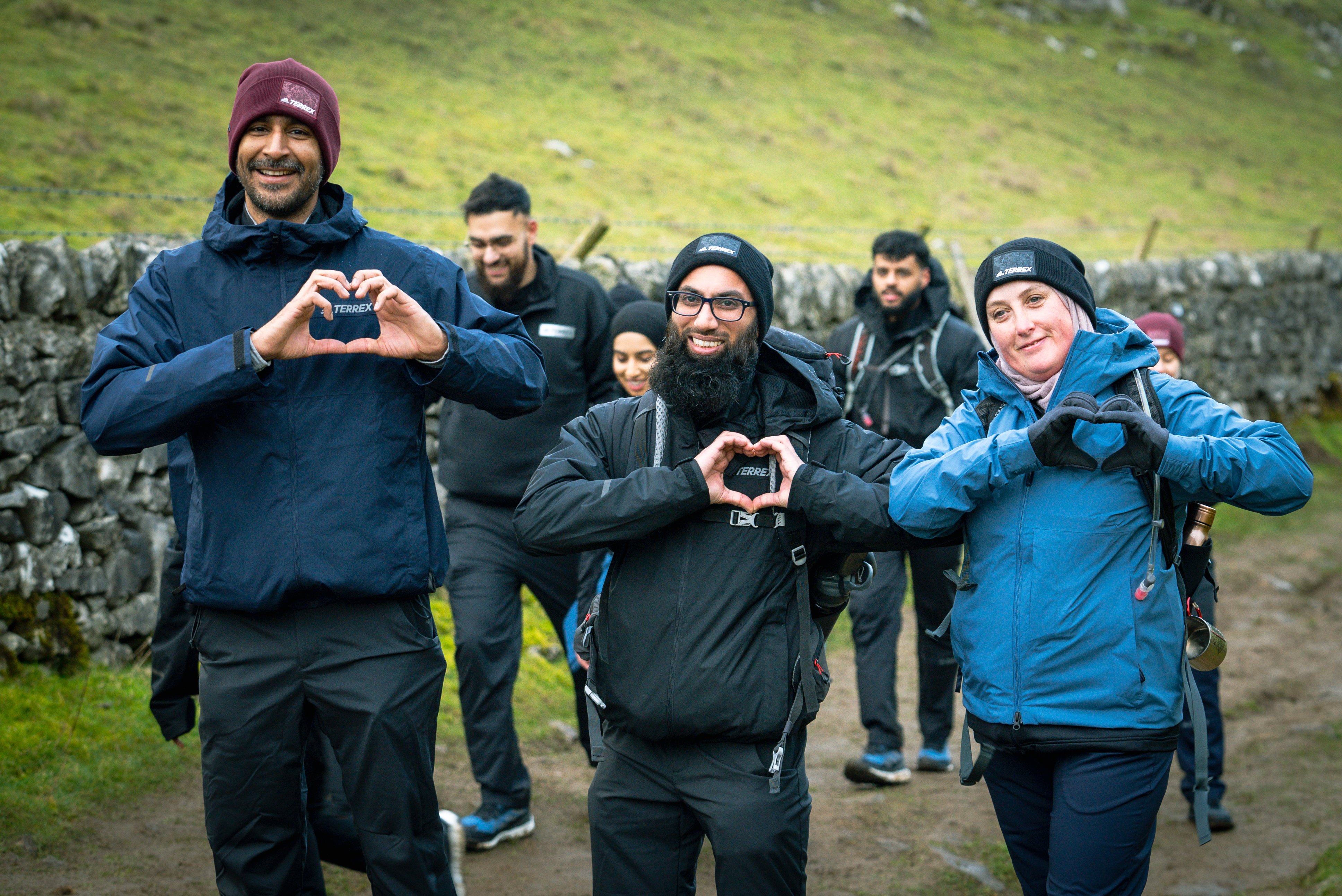Is intersectionality over?
A useful analytical tool has become a box-ticking exercise that places limits on our understanding of people’s lives.
Depending on who you ask and what articles you read, intersectionality is either the biggest threat to modern society, or its saviour. On one hand, it’s a key talking point in pop culture, with singer Solange Knowles saying that she’s excited to see how intersectionality evolves, and a key part of young people’s politics, with a study finding that intersectional motivations were key in mobilising people during the Black Lives Matter protests. Even the Scottish parliament see it as a useful tool for understanding oppression, and have used it to inform policies that help people with disabilities access public services and to address minority ethnic groups’ higher likelihood of getting Covid-19.
But on the other hand, it’s being used by right-wing politicians and commentators as evidence of the ‘tyranny of wokeness’, being labelled the anti-Semitic tool of a ‘new caste system’, the biggest weapon that leftist students have in the ‘Battle of Woke Island’, and quite simply as ‘stupid’ by prominent conservative commentator Ben Shapiro. Either way, intersectionality has become a bit of a buzzword, despite its esoteric origins.
First coined by Kimberlé Crenshaw in 1989, “intersectionality” was supposed to be the long-awaited cure for the big issue that had plagued second-wave feminism: its race problem. It explained that, in a case of discrimination against a Black woman, the discrimination stems from both her gender and her race, simultaneously — just like accidents occurring in the centre of a crossroads as result of traffic colliding from two different directions.
The concept of multiple marginalisation was not new, and had been a feature of Black studies for a while — the Combahee River Collective, Audre Lorde, and Lélia Gonzalez all wrote about similar concepts before Crenshaw’s “intersectionality” came to be. But here was a term which popularised the idea that experiences of womanhood weren’t universal, and that the goals of feminism could and should not look the same for every woman.
It promised, with its nifty traffic metaphor, to unite Black feminists and white second-wave feminists, and to expand the feminist project out to those who hadn’t thus far been the focus of the majority white, middle-class, well-educated movement.
But in the last 50 years, it hasn’t quite achieved those goals. Over time, the concept escaped from the academic feminism that birthed it, and has since become a mainstay in the vocabulary of popular feminism. In the last few years, it has become the go-to label for feminists wanting to show their particular inclusive politics, and it seems that lots of people have some idea of what intersectionality is.
"Intersectionality simply served to make feminism look anti-racist, and was treated as remedial work"
But as feminism, and indeed intersectionality, spread from academia and activism and into the popular conscience, it lost its revolutionary potential. Since it was obviously a good way of looking at feminist issues, it was accepted as the new norm, but in terms of action, little was done to actually make feminism intersectional. So, 50 years later, intersectional feminism is still just a type of feminism with a niche goal rather than a replacement, a subset rather than an ethos.
This is the first problem with intersectionality. While white women were finally agreeing that their feminism was not the feminism that would liberate all women, it was not white women who ended up doing the work to change it. Instead of all feminists adopting an intersectional mindset, the task of intersectionality was, in the most part, left to Black women. White feminists thought they were revolutionising the game, but they were actually just moving over slightly to let Black feminists do the labour of diversifying the movement. Intersectionality simply served to make feminism look anti-racist, and was treated as remedial work, rather than representing a movement which revolutionised from the ground up and was embedded in every part of feminism. It didn’t represent a meshing of feminism and Black studies and instead remained a minority section tacked onto the wider discipline, used to make feminism as a whole seem to be reformed. For example, most syllabuses for feminism modules at universities will include a few texts on Black feminism or intersectionality, often the only assigned texts by Black feminists in the module, which are intended to offset the fact that all the rest of the texts set are usually written by white women (for example, a feminist history course at the University of York has only one week on intersectionality). These texts are usually by the same few feminists of colour, namely Kimberlé Crenshaw, Audre Lorde, and bell hooks, meaning the job of making feminism anti-racist is left to a handful of Black scholars.
And just like in academia, the burden of practising intersectionality tends to fall on feminists of colour. It's Muslim feminists who question the way veiling is always seen as oppressive, and Black women who call out how they are four times more likely to die in childbirth, whereas just “feminism” is no longer radical, focusing instead on individual, capitalistic success in the West.
"Sexuality, disability, geographical location and cultural differences, class, and privilege aren’t really taken into account"
intersectionality, by necessity, draws attention to the “otherness” of the people it refers to, because it’s usually only used when the needs of non-white women are being discussed — for example, we would refer to intersectionality when discussing an Indian lesbian woman, but not a white, heterosexual woman. Whiteness is the default for feminism, so race is viewed as a variation of the “main” marginalisation of womanhood. The word “intersectional” therefore becomes a subtle way of assigning and highlighting difference, because it shows that racial issues are extra to feminism, and not inherent. To put it in gaming terms, intersectional feminism becomes a more laborious side quest instead of being incorporated into the main gameplay.
This is not to mention that intersectionality really just seems to refer to race, specifically Blackness, meaning that sexuality, disability, geographical location and cultural differences, class, and privilege aren’t really taken into account. In Black Feminism Reimagined, Jennifer Nash argues that intersectionality as an academic pursuit is mostly located within Black feminism, and is mired in Black feminists’ protectiveness over its uses. Obviously, this doesn’t stop it being valuable, but it does mean that intersectionality isn’t really as intersectional as it could be since it focuses mostly on the single intersection of womanhood and Blackness.
"Intersectionality has now become a buzzword to signal a certain liberal politics, or a box to be ticked for corporations”
A more visible issue with the label “intersectional” is that it has now become a buzzword to signal a certain liberal politics, or a box to be ticked for corporations, governments, and other organisations so that they can make more money.
Brands and corporations will include diversity and ‘intersectionality’ in their marketing, to attract certain liberal audiences — the same people who might call themselves intersectional feminists — and so intersectionality becomes a tool used to create profit. Promoting an intersectional/ diverse message is good for business, with a study showing that women aged 18-30 are 8% more likely to feel brand loyalty if they see an intersectional advert. But brands and companies very rarely make changes or take any action to actually perform intersectionality or feminism. Take Pretty Little Thing, which claims to ‘to fly the flag for love, equality and acceptance’ and ‘never tear others down’, while underpaying their workers by £27 million and putting them at risk of getting Covid-19 during the pandemic. Or Dove’s ‘Real Beauty’ campaign, in which they use lots of differently sized women to promote their brand’s inclusivity and goodwill, while their parent company, Unilever, has a leadership team which is majority male and white and owns plantations on which employees were not paid after being attacked, raped and killed. Large corporations and brands even using the language of feminism seems very ironic, because these corporations are the very definition of capitalist success whereas the aims and history of feminism are very intertwined with anti-capitalism — the precursor to International Women’s Day was organised by the Socialist Party of America, for example, and Simone de Beauvoir, author of The Second Sex which inspired the second wave of feminism, was influenced by Marxism.
While intersectional feminism is becoming mainstream through its incorporation into business and advertising, academics are increasingly critiquing the idea because of its reliance on identity. Whereas identity politics are the issue of our time in popular consciousness, there’s been a shift to anti-identitarianism in academia since the 1990s. Cultural studies scholars now reject the idea of an inherent identity that each of us are born with, because what we see as ‘gay’ or ‘transgender’, for example, is only seen as different because of the society we live in — people aren’t born gay or transgender, they are just born as they are and then forced to identify with one of the categories we have available.
"In order to identify the ways that someone’s experiences are intersectional, you have to define their identity. But in defining an identity category, you have to place limits on it"
Where this becomes a problem with intersectionality is that in order to identify the ways that someone’s experiences are intersectional, you have to define their identity. But in defining an identity category, you have to place limits on it. You have to say who exactly counts as a woman or what exactly Blackness means, for example, which sounds simple but will always mean that certain people get left out and that certain perspectives dominate — not all women can have children, or have a certain level of estrogen, and there is no one experience of Blackness since the way
Blackness is racialised in the UK is very different to how it is seen in Nigeria, or the US, or India. Everyone’s experiences of different identity categories is different, but by trying to stop the marginalisation of each and every intersectional identity, you end up homogenising all members of particular groups. It’s essentially analysis paralysis, making intersectional feminism work for so many intersectional identities that it can make a difference for none of them.
As it is, intersectionality is not doing what it promised to do. It was supposed to make the legal system more fair for racialised women and then to revolutionise feminism and make it more inclusive as a movement. But instead, as Jennifer Nash puts it, intersectionality has been ‘filled with promise and emptied of specific meaning’, and has actually just ended up reinforcing the whiteness of feminism and the rarity of actual, tangible intersectional feminist action.
So, what is the solution? In the world of academia, intersectional feminism needs to become the new default way of doing feminist thinking, starting with feminist syllabuses including more writers of colour — and not just Audre Lorde. Academia is changing though, because there are a lot of critical perspectives on intersectionality and identity being produced, by Jennifer Nash, Jasbir Puar (Professor of Women's and Gender Studies at Rutgers University) and Sirma Bilge (Professor of Sociology at Université de Montréal) for example. Hopefully, Puar’s ideas on intersectionality not keeping up with changing attitudes to queerness and terrorism, and Bilge’s writing on how to save intersectionality from feminist studies will filter down to classrooms and lead to the next generation thinking critically about intersectionality.
It’s in popular feminism where the biggest changes need to happen. Instead of Florence Given, influencer and yet author of a book titled Women Don’t Owe You Pretty, being hailed as the next feminist icon, we should be giving attention to lots of truly diverse feminist causes and expanding what we think of as feminist. Allowing nuance would enable multiple different ways of practising feminism to be considered at once, and would release the hold that white Western feminism has had on the discipline for so long. For example, actually practising intersectionality would mean we would give attention to the Muslim feminist thinkers who discuss the hijab, and consider that what Western feminism has considered oppressive for so long can actually be empowering for different women.
Using intersectional analysis to help address all the different facets of women’s oppression that overlap, instead of just identifying them as different to white womanhood, gives us a much greater chance at actually lessening those different oppressions. It has the potential to facilitate the liberation of women all over the world, if we practise it correctly and stop trying to impose one specific vision of liberation that is left over from the second wave. We need to be more critical about when we use the term, and to try to actually perform intersectional feminism rather than just labelling ourselves using it. Taking it out of our Instagram bios and incorporating it into activism or perspective would be a good start.
The Lead is now on Substack.
Become a Member, and get our most groundbreaking content first. Become a Founder, and join the newsroom’s internal conversation - meet the writers, the editors and more.





